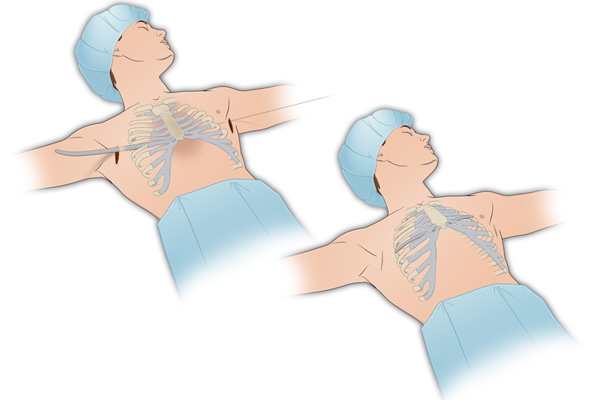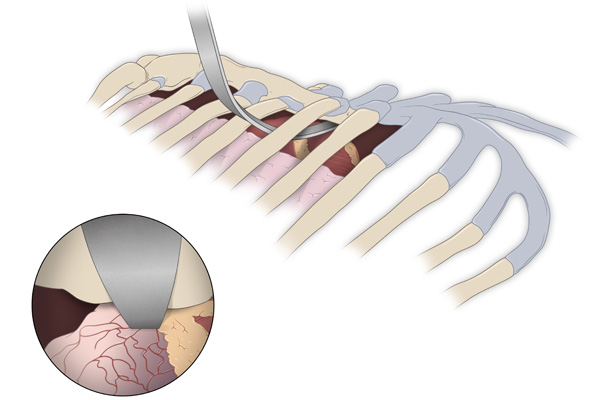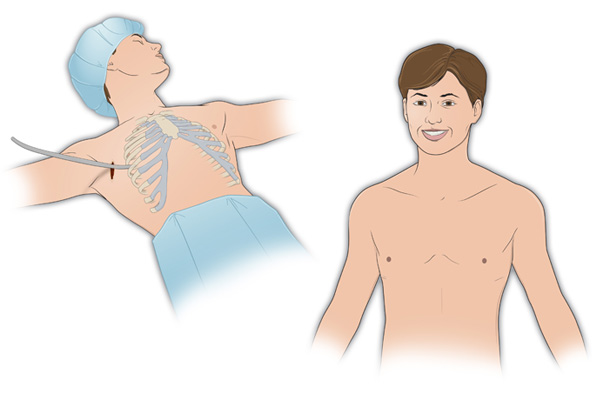Pectus Excavatum Surgery – Nuss Procedure
Pectus excavatum, commonly referred to as “sunken chest,” is when the breastbone, or sternum, and some of the ribs grow abnormally and cause a depression in the middle of the chest. It is the most common congenital chest wall abnormality in children.
If the depression of the chest wall is severe, it can push down on the heart and lungs and makes it hard for them to work properly. If the abnormality is severe, pectus excavatum surgery may be recommended to correct the deformity and eliminate many symptoms such as shortness of breath, difficulty breathing during exercise, chest pain and even episodes of light-headedness. The pediatric surgeons at CHOC in Orange County, California, specialize in performing a minimally invasive procedure, known as the Nuss procedure, to repair pectus excavatum in minimal recovery time.
A historical approach to these surgeries involved a large incision across the chest, and up to six hours in the operating room as the chest wall was taken apart and then reconstructed, known as the Ravitch procedure. There can also be significantly greater blood loss with the Ravitch procedure, and virtually none with the Nuss procedure.
The pectus excavatum team at CHOC is comprised of experts in pediatric pulmonology, cardiology and surgery. The multidisciplinary team performs various tests to examine heart and lung function, before and after surgery. By using the latest techniques in minimally invasive surgery, along with recent improvements in pain management, patients are able to return home and get back to their daily activities sooner than ever before.
Our CHOC pectus surgeons have been doing the Nuss procedure since 2001 with a very high patient satisfaction and success rate. The pediatric surgeons at CHOC have done more than 300 successful Nuss procedures.
Pectus Excavatum and Pectus Carinatum Related Stories
How does the Nuss procedure work?
During the minimally invasive Nuss procedure, two small incisions are made, one on each side of the chest. A scope is used to see inside the chest. This allows us to safely guide a metal bar into the space behind the sternum while avoiding the heart and other important structures.
Through these incisions, we pass the Nuss bar, which is usually custom bent to fit the precise shape of a patient's chest. The Nuss bar rests behind the sternum, serving as a brace to reverse the sunken chest.
Videos

Adalie developed a depression in her chest, and she began experiencing chest pain and shortness of breath that limited her dancing abilities.

CHOC pediatric surgeon Dr. Mustafa Kabeer explains in this video what pectus excavatum is and how it is treated.
Meet Our Team of Pectus Experts
Meet our team of physicians and NPs who are experts in pectus treatment, as well as our pectus coordinator, Jacqueline Hurley.

Kabeer, Mustafa H. MD
Specialty:
Pediatric Surgery
Appointments: 714-364-4050
Office: 714-364-4050
Dr. Mustafa Kabeer is a board-certified pediatric surgeon at CHOC, performing all types of general surgery and specializing in pectus excavatum (sunken chest), lung resection, hernia and robotic surgery.

Goodman, Laura F. MD
Specialties:
Pediatric Surgery, Thoracic Surgery
Office: 714-364-4050
Dr. Goodman is a pediatric general and thoracic surgeon who performs surgery on infants and children at CHOC Hospital in Orange

Kim, Joseph K. MD
Specialty:
Anesthesiology
Appointments: 714-560-1580
Dr. Kim is a board certified anesthesiologist who provides care for infants and children undergoing anesthesia at CHOC Hospital in Orange.

Kamath, Sunil P. MD
Specialty:
Pulmonology
Appointments: 888-770-2462
Office: 714-509-8622
Dr. Kamath is the Medical Director of Respiratory, Pulmonary and Blood Gas Services.
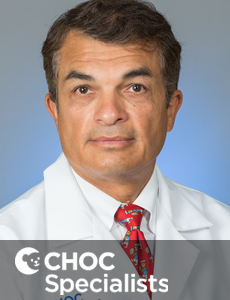
Reyna, Troy M. MD
Specialty:
Pediatric Surgery
Appointments: 714-364-4050
Dr. Troy Reyna is a board-certified pediatric surgeon at CHOC, specializing in pectus excavatum, hernias and hyperhidrosis.
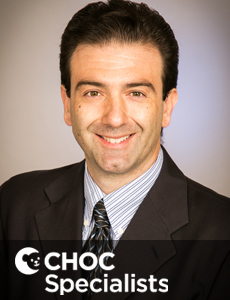
Renella, Pierangelo MD
Specialty:
Cardiology
Appointments: 888-770-2462
Office: 714-509-3939
Dr. Pierangelo Renella is board certified pediatric cardiologist who treats kids with heart problems. He has privileges at CHOC Hospital.
